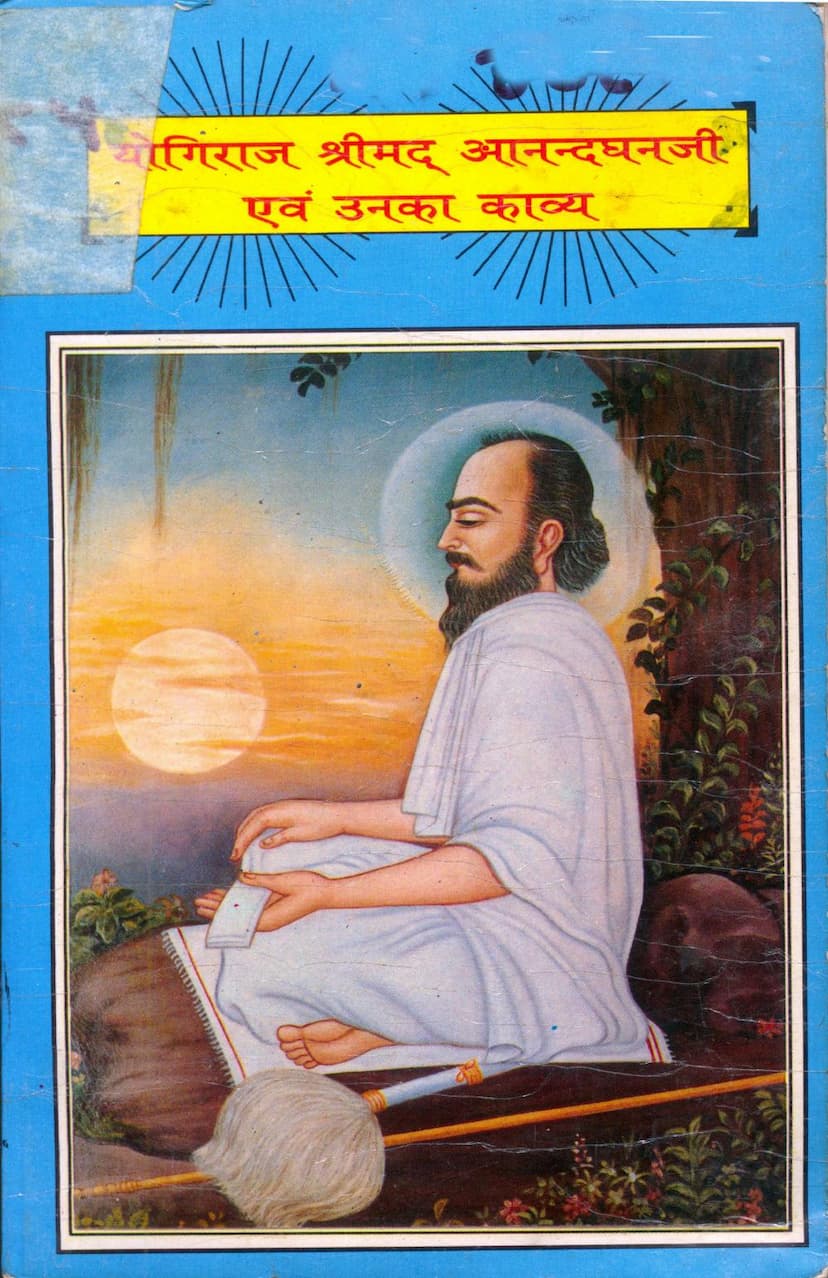Yogiraj Anandghanji Evam Unka Kavya
Added to library: September 2, 2025
Loading image...

Summary
This book, "Yogiraj Shrimad Anandghanji Evam Unka Kavya" (Yogiraj Shrimad Anandghanji and His Poetry), authored by Nainmal V. Surana, published by Sushil Sahitya Prakashan Samiti, is a comprehensive exploration of the life and poetic works of the renowned Jain mystic and poet, Yogiraj Shrimad Anandghanji Maharaj.
Key Aspects of the Book:
- Focus on Yogiraj Shrimad Anandghanji: The book delves into the spiritual life, philosophical insights, and yogic practices of Anandghanji Maharaj, a prominent saint of the 17th century who was a contemporary of Mahopadhyaya Yashovijayji Maharaj.
- Analysis of His Poetry: A significant portion of the book is dedicated to the detailed analysis of Anandghanji Maharaj's poetry, particularly his famous work, the "Anandghan Choupisi" (Anandghan's Twenty-Four). These verses are presented as profound expressions of his inner spiritual experiences, encapsulating the entire path to liberation.
- "Gagar Mein Sagar" (Ocean in a Pot): The poetry is described as being like an "ocean in a pot," meaning that despite their concise form, the verses contain immense depth of meaning and spiritual wisdom. They are considered the outpourings of Anandghanji Maharaj's soul.
- Spiritual Experience: The book highlights that when a devotee immerses themselves in the singing and contemplation of these verses, they can experience profound self-realization and spiritual bliss.
- Dedication: The book is respectfully dedicated to Yogiraj Shrimad Anandghanji Maharaj and his profound work.
- Structure and Content:
- Life Sketch: The book provides a glimpse into the life of Anandghanji Maharaj, acknowledging that a sequential biographical account is unavailable. Information is gathered from legends, his verses, and the heartfelt expressions found within his compositions.
- Birthplace and Time: The book discusses the difficulty in pinpointing his exact birthplace and family, with various theories suggesting Marwar, Uttar Pradesh, Gujarat, or Kathiawad. His time is estimated between Vikram Samvat 1650 and 1740 (approximately 17th century). His deeksha name was Shrimad Labhanandji.
- Samakaleen (Contemporary Figures): He was a contemporary of Mahopadhyaya Yashovijayji Maharaj. The book notes that Yashovijayji Maharaj even composed an Ashtapadi in his praise.
- Language and Style: The book discusses the linguistic nuances, noting that while his stanzas (stavan) have a Gujarati influence, his pads (songs/verses) are primarily in Rajasthani, likely his mother tongue. His verses are rich with spiritual philosophy, yogic secrets, and profound insights into Jain scriptures.
- Choupisi: The "Anandghan Choupisi" is elaborated upon, with each stanza dedicated to a Tirthankara, reflecting on spiritual principles, love for the divine, and the path to salvation.
- Spiritual Teachings: The poetry is rich with teachings on Vedanta, the nature of reality, the separation of the material and spiritual, the assimilation of scriptural knowledge, the importance of right knowledge, perception, and conduct, and the freedom attained through self-realization.
- Allegorical Language: Anandghanji Maharaj uses "Ulat-baansis" (paradoxical or inverted statements) to explain the nature of the world, self-realization through various philosophical concepts (Nay, Nikshep, Praman, Saptabhangi), dialogues between different aspects of the self (Sumati-Kumati, Samata-Mamata), and spiritual relationships through everyday familial terms.
- Inclusion of Other Poets' Works: The book acknowledges that some verses attributed to Anandghanji might have been composed by other saints or poets.
- Commentary and Analysis: The author, Nainmal V. Surana, has provided detailed explanations (Bhavarth) and interpretations of the verses, drawing upon his knowledge, experience, and the works of other scholars.
- Contribution of Supporters: The book highlights the contribution of various individuals and organizations, including Shri Jain Shwetambar Sakal Sangh, Medta City, who supported its publication.
- Sacred Places: The book features images of significant Jain sites related to Anandghanji, such as the Shantinath Jin Mandir and the Yogiraj Shrimad Anandghanji Smriti Mandir in Medta City, Rajasthan.
- Spiritual Significance: The works are deeply spiritual, emphasizing detachment, self-realization, and the pursuit of liberation. They are considered a valuable heritage in Jain spiritual literature.
In essence, this book serves as a tribute to Yogiraj Shrimad Anandghanji Maharaj, offering readers a deep dive into his profound spiritual poetry and the timeless wisdom it conveys.